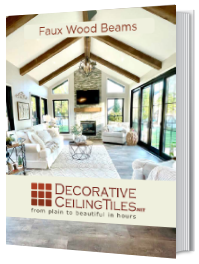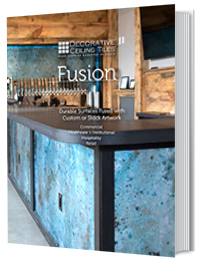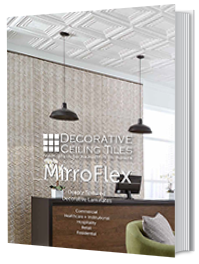How to Choose Baseboard for Your Living Area
Written by Milan Jara on 28th Oct 2022

With so much selection, you may wonder how to choose a baseboard. We guide you through the best type for each room and what style to pick.
While many homeowners don’t give much thought to the type of baseboard installed in their home, they should. Baseboards tend to be an afterthought during home renovations, yet they are essential to the overall appearance of a room. They have a purpose, and, depending on the room, not all baseboards are equal. We teach you how to choose a baseboard.
Most people notice the baseboard trim at the bottom of their wall where it meets the floor. When it becomes dirty, we clean it. Other than that, we don’t give it much thought. However, baseboards are essential in any space as they complete the room's look, provide visual weight, anchor walls, hide damage and gaps, and protect delicate finishes like wallpaper.
Do You Need to Install a Baseboard?
Whether you need to install a baseboard trim is a subject that designers disagree on. Some say not every area requires a baseboard. While they do provide a finished look, they aren’t a requirement. If you want your walls to be a focal point or to create a gallery appearance, you may want to forgo adding baseboards. Whether to install them depends on your home’s design and your personal preference.
How to Choose Baseboard
Before determining baseboard color, height, and style, you must decide on the best material for the area. While there are a variety of options, each contains different properties. While you may like wood, for example, this baseboard style may be completely impractical in a bathroom.
Materials
There are different materials that you can select for your baseboard molding. While you may like one baseboard style, you ultimately have to choose the one that is right for your space. You may have issues if you don’t buy according to the room conditions.
Several factors determine where is the best place for baseboards in your home. The best-suited areas will be determined by factors like usage, location, foot traffic, cost, and moisture. The simple answer is to use wood. However, this material is not best for all areas in a house.
Wood
Wood is the most popular option in terms of baseboard molding. The types of wood include poplar, pine, oak, and maple. Wood will allow you to paint or stain it, which materials like PVC or MDF may not. If you want a higher-end look, you can consider purchasing baseboards of tropical hardwoods like teak or ipe.
When a tropical hardwood baseboard is stained, it looks different from other types of wood. The uniqueness in grain and wood differences makes it more desirable.
Cost varies. Higher-end wood baseboards may only be in locations specializing in lumber and wood. It is always best to inspect any type of wood you purchase. This is even more important with baseboards since they may have irregularities like bows, knots, splits, and twists that negatively affect your installation and the finished result.
Furthermore, wood is not ideal for locations with high moisture, like outdoors or in a bathroom. These high-humidity areas may cause untreated baseboards to bow, warp, rot, or be prone to mold. They may require some fixing.
Medium Density Fiberboard (MDF)
MDF is the most cost-effective option and comes pre-primed with many profile sizes. MDF is a fiber-based panel of wood fibers bound together using resin under heat and pressure. MDF is a lightweight material but may not hold up well as it is prone to dents, marks, and nicks.
This material may be water-resistant but it can bubble or warp when exposed to too much water. They don’t stain well but do well with paint.
PVC
PVC is a plastic trim that comes in various looks which closely resemble paint or wood. This plastic baseboard can withstand water damage; however, if it becomes damaged through contact, it is difficult to repair and will likely need replacing.
PVC is easy to use but isn’t forgiving with cutting and saws compared to solid wood. Installation may require additional work to secure the PVC to the wall, and using fasteners like staples or brad nails can be challenging with this material.
Vinyl
Synthetic vinyl baseboard is termite-resistant and water-resistant. These properties make it ideal for locations like basements, utility rooms, exterior rooms, and anywhere moisture or humidity is an issue. It comes in rolls, and industrial-strength glue holds it into place. Vinyl is durable and best used in high-traffic areas.
Baseboard Profiles
Once you have selected what material is best for your room type, you can choose the style. Baseboards come in a vast selection of shapes. Generally, they fall into four trim profiles. They don’t contain established names, but they may be labeled as traditional, colonial, etc. Most are labeled according to dimension.
Stepped/Rounded

This profile is the most popular. The trim’s top has a rounded shape that tapers beautifully into a wall. The trim looks great in a modern home due to its short profile and simplistic design. Their dimensions tend to be 5/8” to 7/8” in width plus 3” to 3 ½” in height.
Flat
Flat baseboards are flat on the front and come in different heights. They range from 3½” to 4½”. The back of the baseboard is grooved, which allows it to bend for an easier installation. This baseboard is versatile, and you can use it in various homes.
Sculpted Mid-height
The height ranges from 4 to 5 ½” and is 5/8” thick. The top part is decorative with steps or scallops that taper to the wall, making the trim best for more formal areas.
Sculpted Taller
This type creates a visual impact in a room. It ranges from 5 ½” to 7” in size and is 5/8” to 1” in width. Its top edge contains decorative scallops or has a stepped detail. Sculpted taller works best in areas that are large or grand.
Quarter Round/Shoe Molding
These terms are often used interchangeably but are two different trim styles used alongside baseboards. Quarter round contains one-quarter round dowels with a 90° angle on its back. It fills corners or softens 90° joints between moldings and trims.
Shoe molding is like quarter round because it uses the same 90° angle on its back, but instead of containing a quarter radius, it uses a squatter profile and runs along intersections of floor and baseboard moldings.

When selecting the height of baseboard moldings, it’s primarily based on your preference. Some homeowners gravitate towards shorter pieces that blend in seamlessly with the walls. Others may prefer longer baseboard styles that appear like substantial trim.
To create a happy medium, your overall baseboard height in inches should be the same as your ceiling height in feet.
Final Words
When choosing baseboards, you must consider the room's location, foot traffic, and moisture content. Additionally, you may have to examine whether the floor is uneven, as this will affect installation. This will determine what baseboard material will work best for which location. It will also provide a reference for what will best stand up where.
The second consideration is the style and height of the baseboard. Your baseboard must look good and blend in with the room's décor. Otherwise, it will stand out and appear out of place. Finally, you will need to measure how many linear feet you will need to use.




